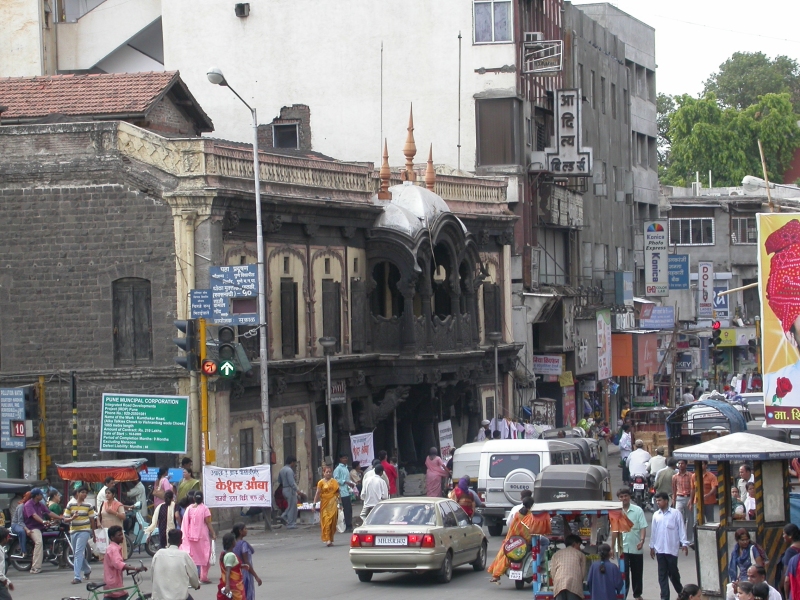
The Vishram-baug wada is a historic Peshwa mansion, built in 1811 by Peshwa Baji Rao the second, for his relaxation and entertainment. This Wada has a large dancing hall, which still houses a large number of artifacts: paintings, chandeliers, vases and other knick-knacks belonging to the Peshwas.

A magnificent three-storeyed edifice with great dark processed saag (teak) columns and cream walls. I was mesmerized by the grand carved woodwork of the balcony and entrance. The overall look from the suru (cypress-shaped) columns to the intricate ceilings, took me back to more glorious times. Truly, a façade I will never forget.
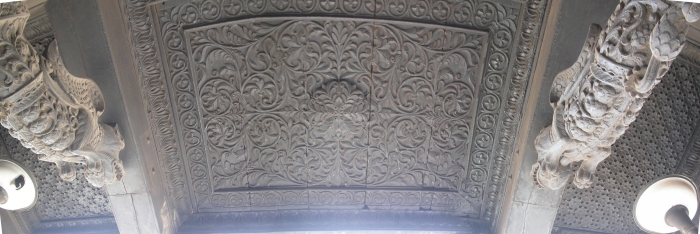
Ceiling
of the entrance, supported by
ornate winged lion corbels.
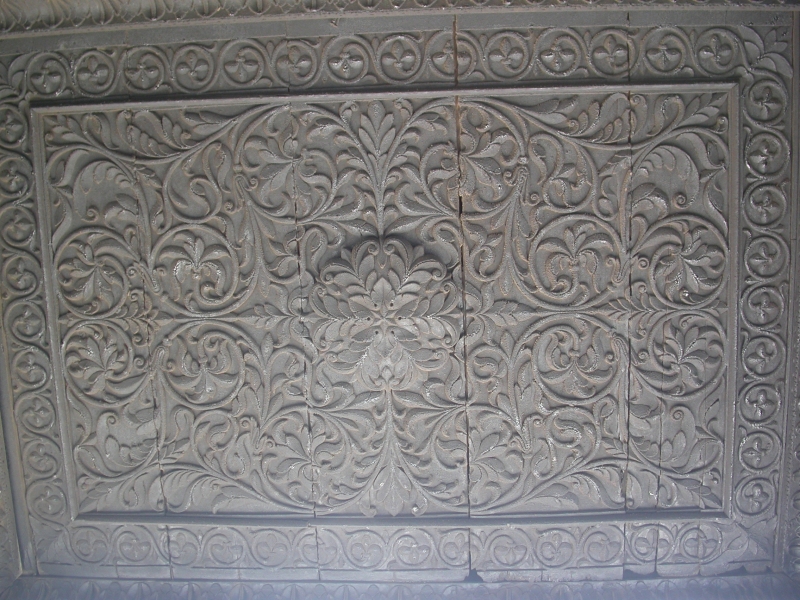
Closeup
of the ceiling over the entrance
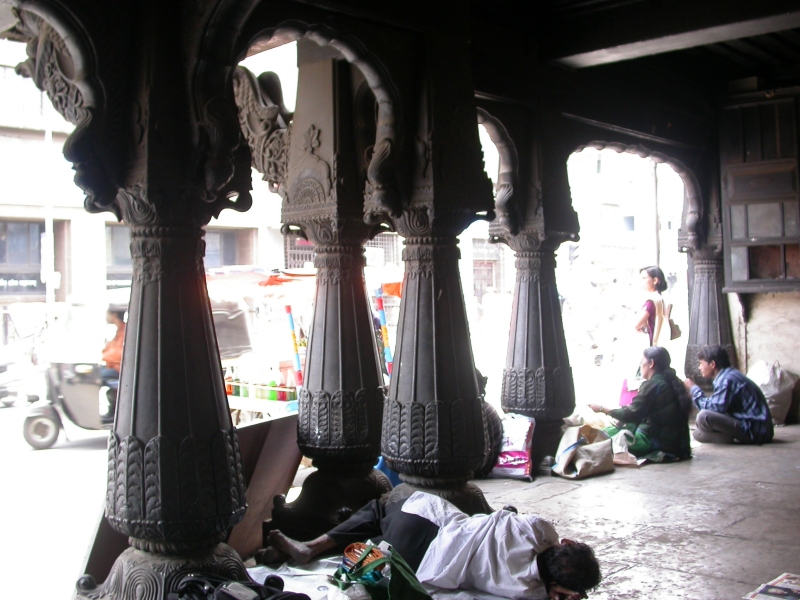
Nevertheless a period building, steeped in history and intrigue, I felt
a distinct sense of awe, standing before the property created
by my ancestor, Bajirao-II.
The first floor has a large dancing/darbar hall, facing Bajirao Road with an ornately carved ceiling, carved teakwood pillars and period chandeliers.
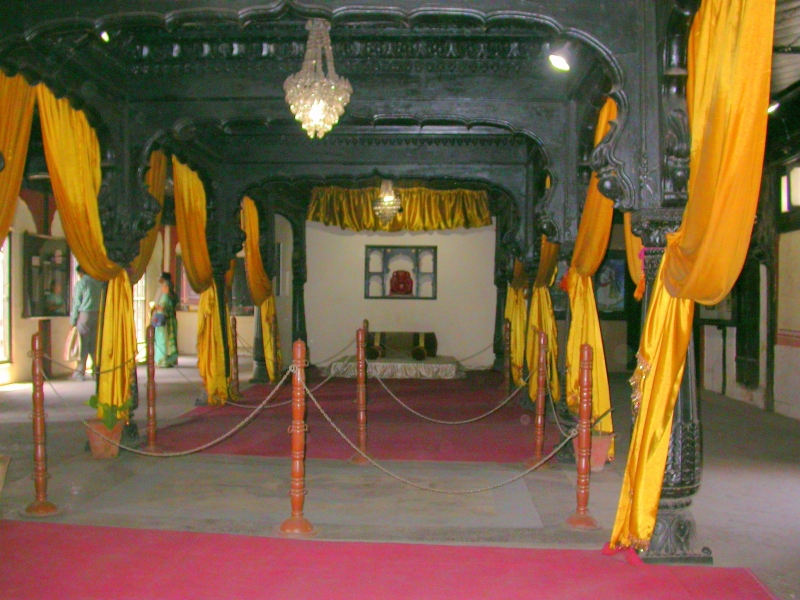
Bajirao's musicians, once played music in the evenings, from the grand teak faced balcony. Today, the balcony is off-bounds for visitors. Its weathered wooden beams no longer considered safe to hold human weight. The dark oxidized ancient latches and hasps on the doors have ugly contemporary padlocks which jolt the mind back from the glorious reverie of history back to the everyday present.
|
|
|
After the Peshwa rule ended and the British took over Pune, the Vishrambaug Wada was used as a jail. From 1930 to 1958, the Vishrambaug Wada housed the offices of the Pune Municipal Corporation. The wada now houses a large number of government offices. Portions of it are now used as a Post office, a shop by the Savitri Marketing Institution for Ladies Empowerment (SMILE) selling handicrafts. There was an excellent exhibition on the history of Pune: "punawaDii te puNyanagarii". Entry was Rs. 3.00.
The Mastani Mahal was undoubtedly the pièce de résistance and the principal reason for my visit to the Raja Dinkar Kelkar museum. The museum itself is housed in a quaint Rajasthani-style building on an improbable-looking side-street off Bajirao Road. A prominent “Photography strictly prohibited” sign puts off the tourist-historian in me. The building itself looks dignified with carved teak wood door frames everywhere, recovered from palaces and mansions in Maharashtra, Gujarat and Tamilnadu. Even the elevator entry doors and the little snack shop outside have teak artifacts.
Mr. Kelkar apparently found the Mastani Mahal, lying forlorn in the wilderness of Kothrud. He had his technicians dismantle and transplant a whole section to its present location in his museum on Bajirao road.
The intricately carved suru(cypress) wooden pillars, charming murals and rich furnishings evoke the fairy-tale atmosphere of the boudoir of Bajirao’s beloved Mastani.
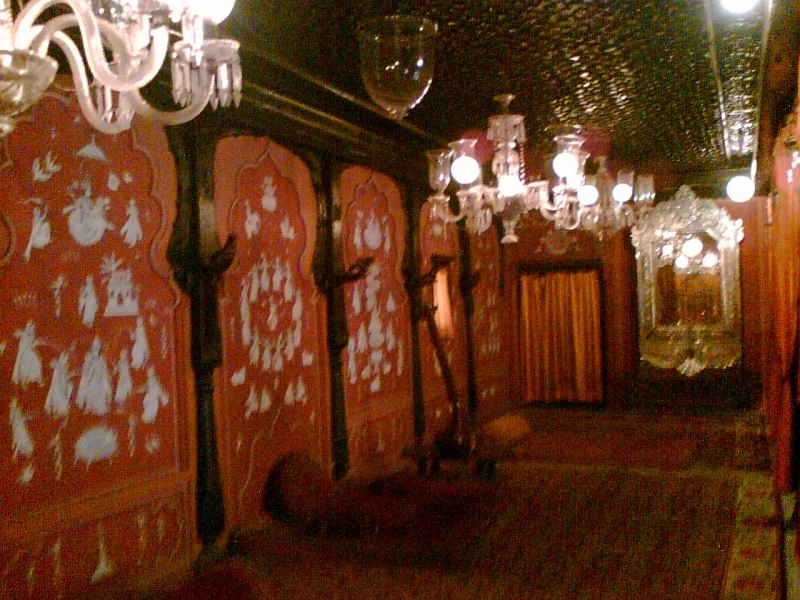 |
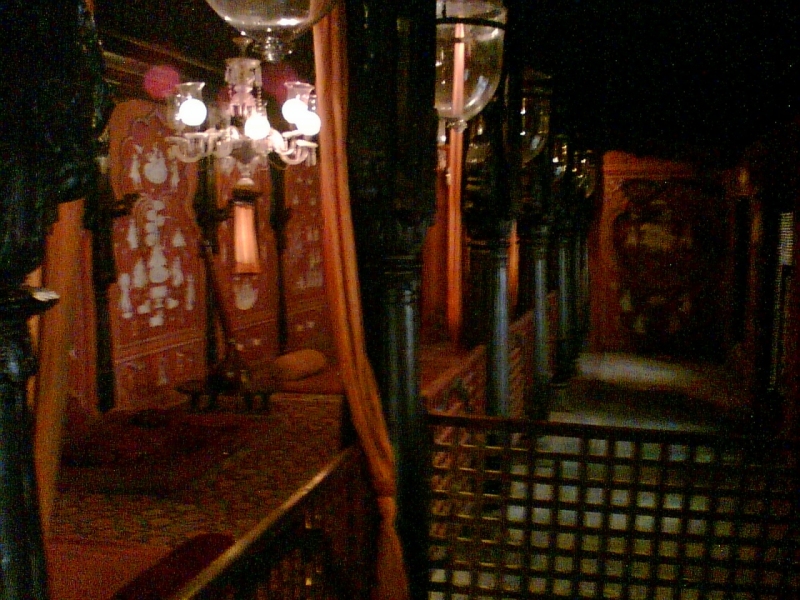 |